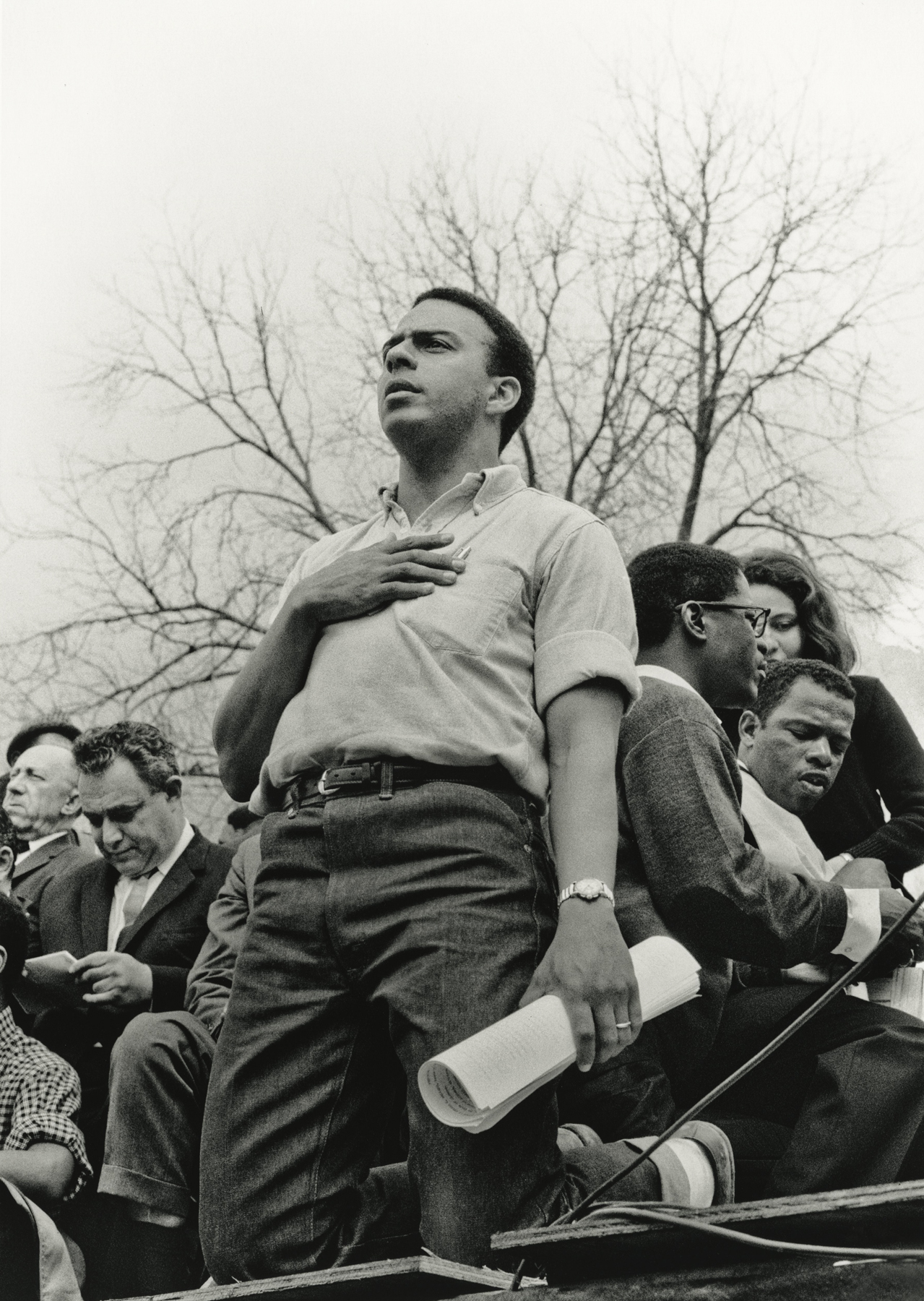
Andrew Young, hand over heart, and on knees, in contemplation, long after the National Anthem was sung, March 25, 1965
Stephen Somerstein
“All through the march I was thinking, ‘This is history in the making. Can I capture it? Can I give a sense to other people of what I am experiencing myself?’ That was the thread that always wove through the back of my mind. Am I up for the task?… I turned my camera most consciously to the people watching the march. It was meant to free them. The march was meant to give them voting rights. The march was meant to change their lives… I wanted the pictures to be a window for people to look back in time and see what it was like then. I needed to capture a sense of their vision.” -Stephen Somerstein
When the great Selma-to-Montgomery Civil Rights March took place in January 1965, Stephen Somerstein, who was a 24 year old student as well as an editor for New York’s City College newspaper, brought with him five cameras and took a bus to the South on a short notice. Some of his 400 photographs captured the most iconic civil rights images of the time. After graduation, Somerstein had been working as a physicist at the Harvard-Smithsonian Astrophysical Observatory until his retirement. His powerful photographs are not widely seen by the public until many years later.